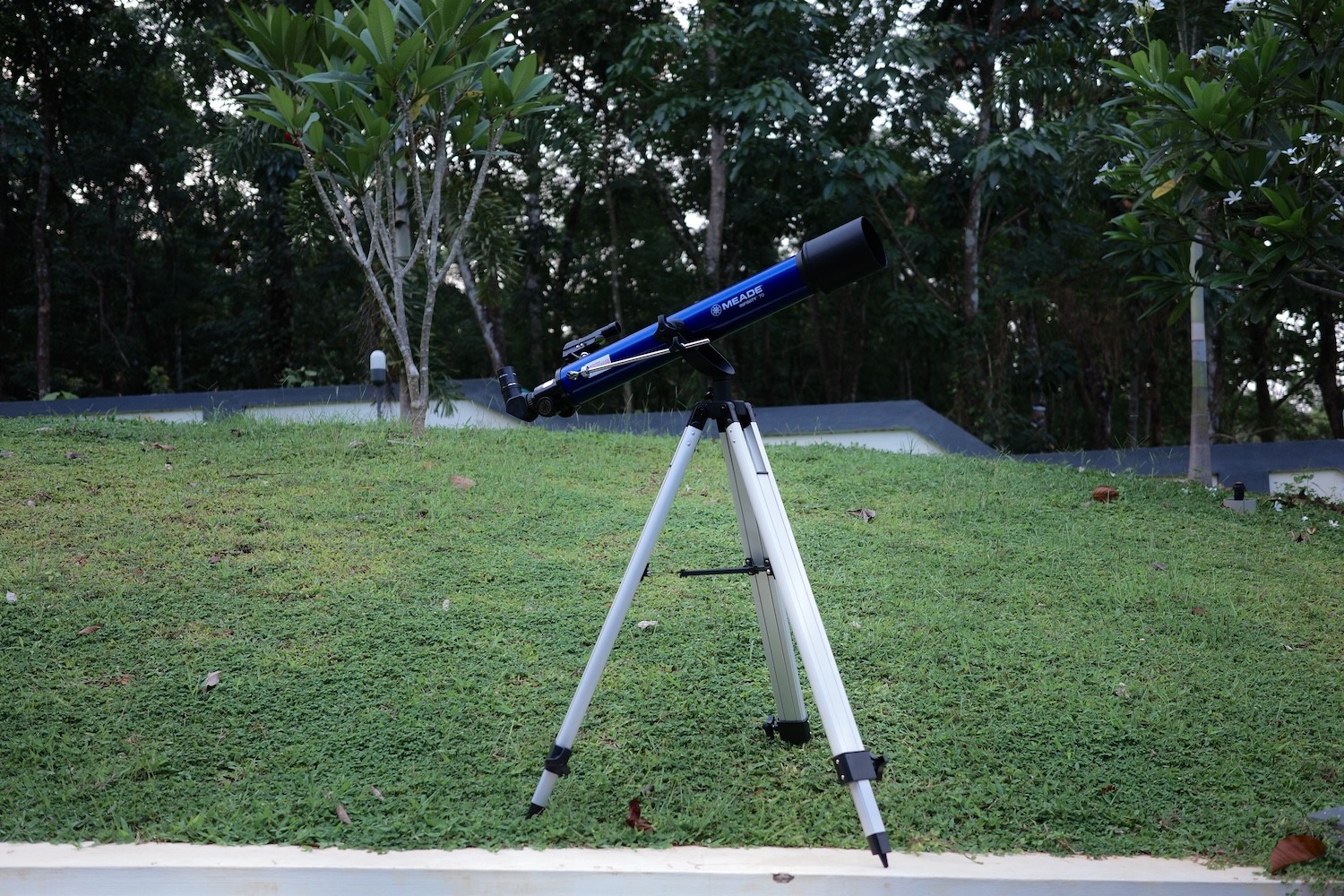The Optical Tube Of Infinity 70AZ
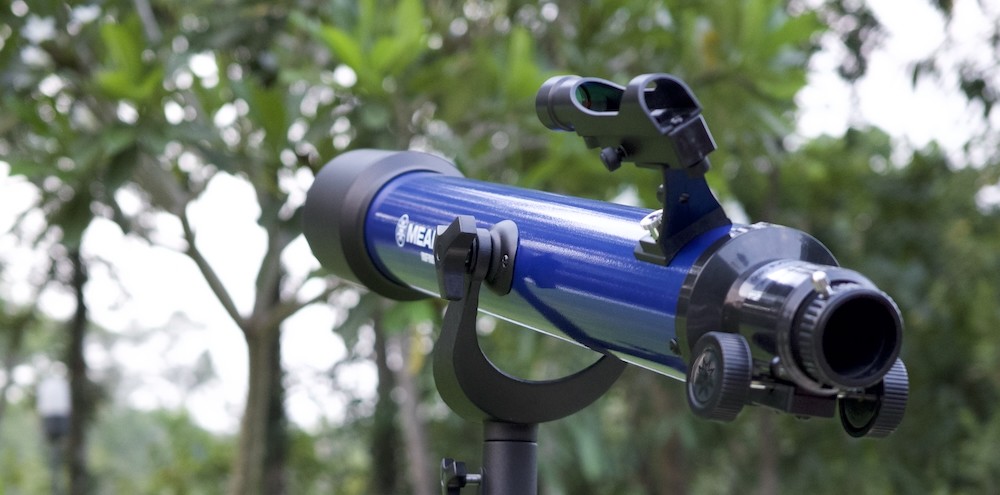
Being an achromatic refracting telescope, as expected, it suffers from chromatic aberration, or false color, which manifests as purplish halos around bright targets such as the Moon, planets, and stars. However, I’ve noticed that the scope’s fairly slow focal ratio of f/10 is helping to make the chromatic aberration quite tolerable while viewing. I could still notice it, but the impact of it on my views is little, unlike most other refractors in this price range that I’ve tested.
Optically, I find it to be pretty good in quality, considering that it’s a cheap 70mm achromat with fairly little in the way of light gathering or resolving power.
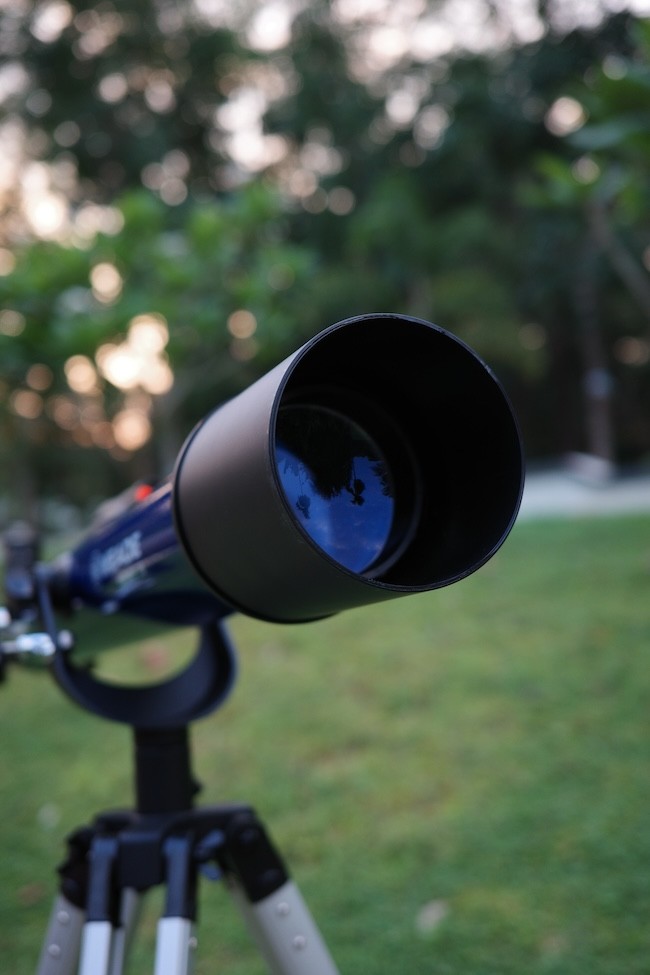
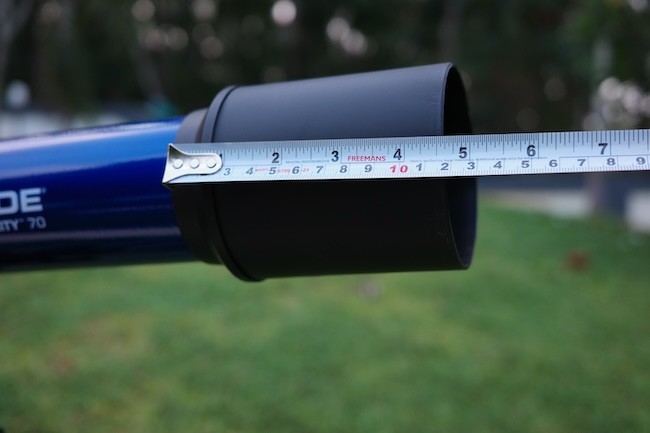
The Infinity 70AZ has an ample-length dew shield. But the inside isn’t painted the best, and it isn’t baffled particularly well to block unwanted light either. So glare is sometimes a problem with this scope on/around bright objects. Also, nearby stray lights have an easier time getting into the tube.
I recommend roughing up the inside with some coarse grit sandpaper (the dew shield comes off the scope very easily—just pull) and spraying some flat black spray paint on it.
The focuser on the Infinity 70AZ is a standard 1.25” rack and pinion unit, mostly made out of plastic. It’s acceptable, if subpar, even by the standards of typical cheap rack-and-pinion focusers.
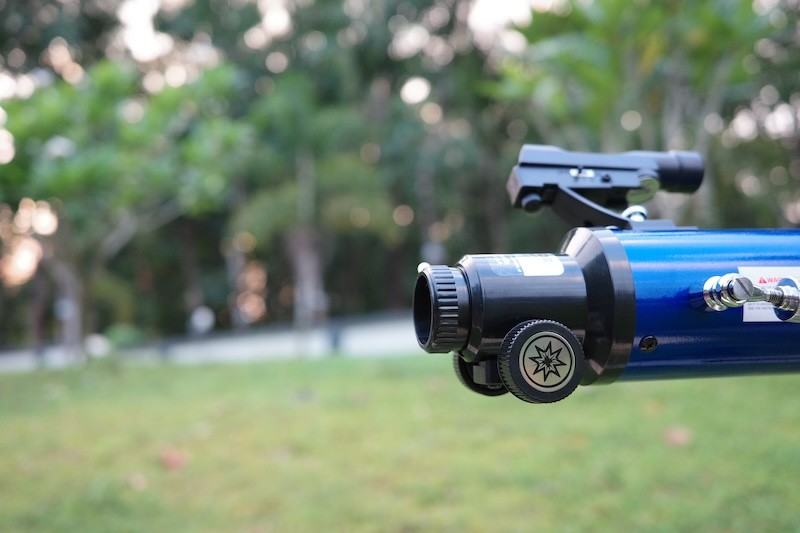
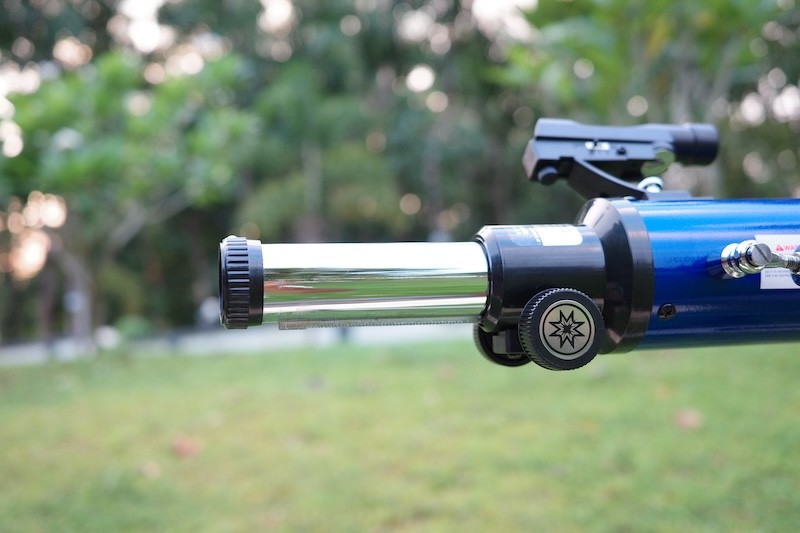
Accessories
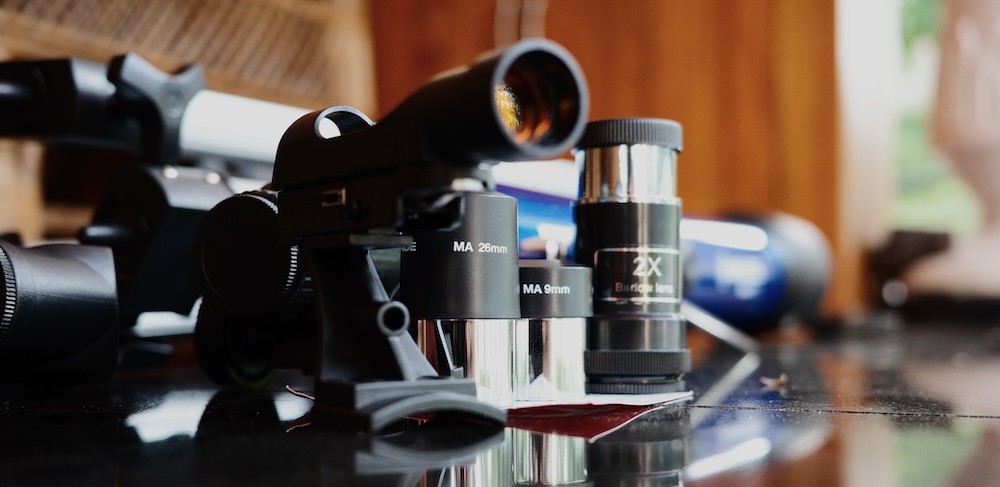
The Infinity 70AZ comes with two eyepieces: a 25mm Kellner for 28x and a 9mm Kellner giving 78x.
Meade also supplies a 2x Barlow, allowing us to achieve double magnification with the supplied eyepieces (56x with the 25mm Kellner and 156x with the 9mm Kellner). I’d warn you that 156x magnification is slightly above the limit of what the scope can technically handle.
The 2x Barlow is mostly plastic but is at least usable, although it really isn’t much more helpful than a dedicated 12.5mm eyepiece would be.
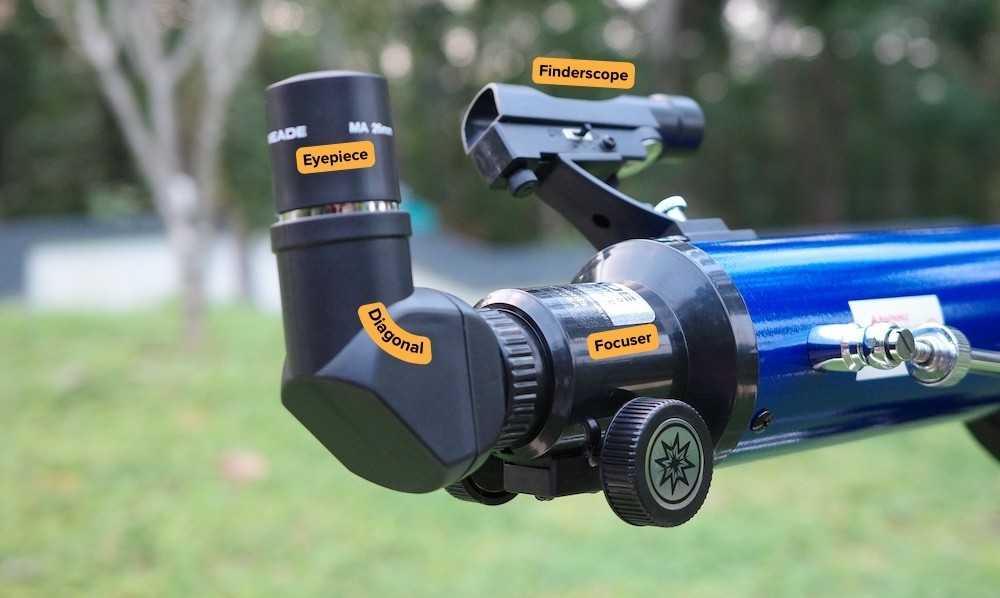
The Infinity 70AZ’s supplied diagonal is an all-plastic Amici prism, allowing for correct left-right images. The Amici design inevitably produces a spike effect on bright stars and the planets, but other than that, it works surprisingly well.
The Infinity 70AZ’s plastic red dot finder is decent in quality and more than adequate for aiming a 70mm telescope.
Mount
The Meade Infinity 70 AZ’s mount’s design has been around on inexpensive refractors since the 1950s but is highly variable in how well it’s actually executed.
Tensioning on both axes can be adjusted with two large plastic hand knobs that increase the friction on the bearings.
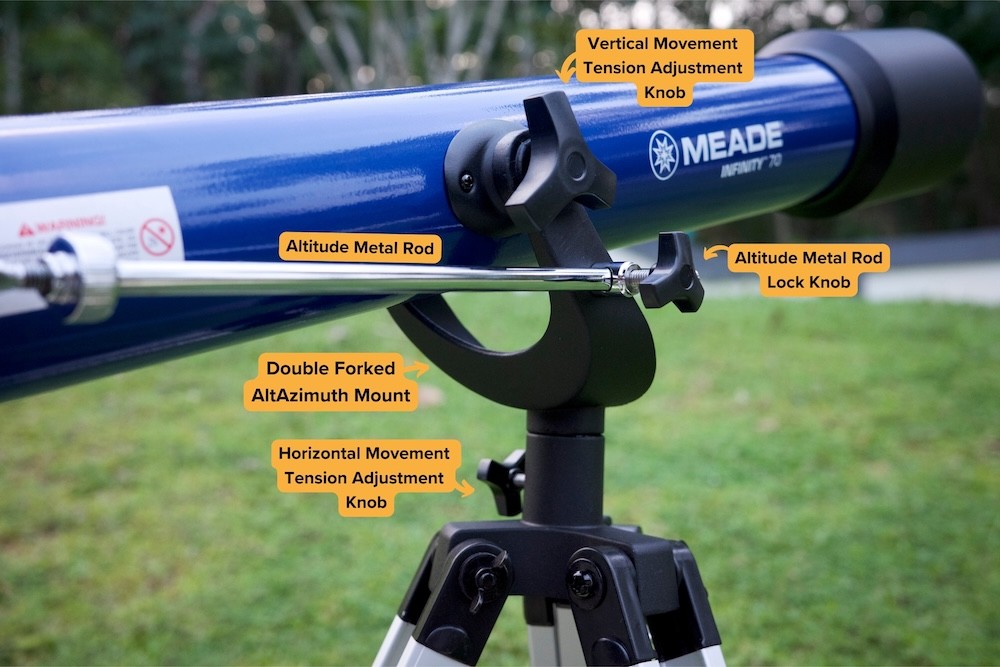
While not the most aesthetically pleasing and lacking slow-motion controls, the long tube of the Infinity 70 makes it surprisingly tolerable for me to simply push the tube to move the scope.
Since I was concerned about the mount’s stability, I added a sandbag (also brick) to the accessory tray while I used it. You could also fill the legs with spray foam, which is an equally cheap and effective way to dampen the scope’s tripod.
Alternative Recommendations
For similar prices to the Meade Infinity 70, there are a couple of other options you might want to consider.
Under $200
- Dobsonian Reflector Scope: The Zhumell Z100/Orion SkyScanner 100mm offers a much wider field of view, a steadier mount, and more than twice as much light-gathering power as the Infinity 70AZ, as well as having no chromatic aberration and being far more compact for transport.
- Dobsonian Maksutov Scope: The Sarblue Mak60 with Dobsonian Mount is about as capable as the Infinity 70AZ on the Moon and planets but is more compact, doesn’t suffer from chromatic aberration and its mount is rock-sturdy if you set it atop a steady surface.
- Tripod Reflector Scope: The Orion SpaceProbe II 76 EQ isn’t much better than the Infinity 70AZ in performance or mounting quality but its reflector design lacks chromatic aberration and tends to keep the eyepiece at a more comfortable height.
$200-$250
- Dobsonian Scope: The Orion StarBlast 4.5 Astro/Zhumell Z114 has a simple, solid tube instead of the Heritage models’ collapsible tubes and its 114mm primary mirror delivers plenty of resolving power and light gathering capability at a price that won’t break the bank.
Aftermarket Accessory Recommendations
We’d probably recommend upgrading the Infinity 70AZ’s mediocre diagonal if you can. The Celestron 94115-A Prism Star Diagonal is our favorite pick, and it will significantly improve the clarity of your views with the Infinity 70AZ.
A 6mm “gold-line” or “red-line” eyepiece will provide 116x magnification with the Infinity 70AZ, offering about the most magnification you can expect the telescope to feasibly handle and ideal for close-up views of the Moon, planets, and double stars.
What can you see with the Meade Infinity 70AZ?
Testing Solar System Targets
The Meade Infinity 70 shows a lot of detail on the Moon, Mercury, and Venus’ phases, the ice cap on Mars when it’s at opposition, as well as Jupiter’s cloud bands, the Great Red Spot, and its satellites.
Saturn’s rings and its moon, Titan, are visible, and on a good night, some of Saturn’s cloud bands and the Cassini division in its rings can be spotted.
Uranus and Neptune are tiny bluish dots that are difficult to locate without consuming a lot of time.
Testing Targets Outside Solar System
Outside the solar system, you’re limited by the Infinity 70’s small aperture.
The Orion Nebula and many bright open clusters can be spotted, along with Andromeda and a few other galaxies. But don’t set your expectations too high, especially if you live in or near a city.
Globular clusters, in particular, disappoint with the Infinity 70—or any small telescope—even under dark skies, being simply too small or dim to resolve with a telescope below about 6” of aperture.
A few of the large planetary nebulae, such as the Ring and Dumbbell, show detail, but don’t expect dazzling colors or easy-to-spot features.
There are also a fair amount of double stars and asteroids that can be spotted with the Infinity 70, though they will remain points of light (if perhaps colorful ones) no matter what magnification or telescope you use.

